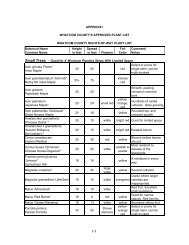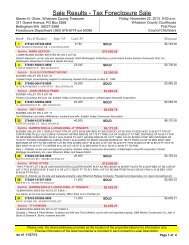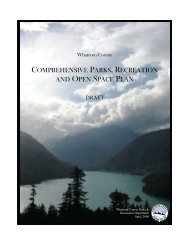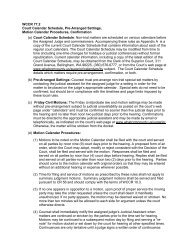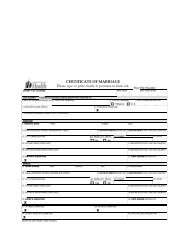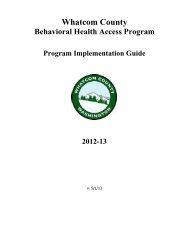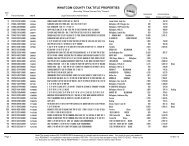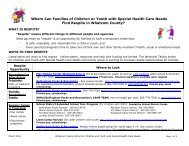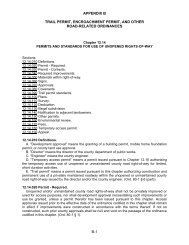Poisonous Plants Booklet - Whatcom County
Poisonous Plants Booklet - Whatcom County
Poisonous Plants Booklet - Whatcom County
Create successful ePaper yourself
Turn your PDF publications into a flip-book with our unique Google optimized e-Paper software.
WASHINGTON STATE NOXIOUS WEED<br />
TANSY RAGWORT<br />
Senecio jacobaea<br />
Description: In the Northwest, tansy<br />
ragwort is a major livestock poisoning<br />
plant that grows in pastures and<br />
along roadsides. It blooms from July<br />
through September. The daisy-like<br />
yellow flowers produce seeds which<br />
are transported by wind, water, and<br />
animals. The leaves are deeply cut,<br />
giving it a ragged appearance. The<br />
plant can reach six feet in height. It<br />
can be distinguished from other<br />
plants by counting the yellow petals<br />
on the flowers—usually 13 per<br />
flower.<br />
Toxicity Rating: Moderate/High<br />
Toxic Part:: The entire plant is toxic. Higher levels of toxin may occur<br />
in the flowers. The toxin remains in the plant after drying.<br />
Signs/Symptoms: Tansy ragwort toxins will build up in livestock and<br />
lead to liver damage. Poisoned animals may become easily agitated,<br />
have loss of appetite, chew on fences and<br />
dirt, become weak, and have a staggering<br />
gait. Some animals may not die, but will<br />
remain in poor shape. This condition is not<br />
reversible. Cattle and horses are more seriously<br />
affected than goats and sheep. Poisoning<br />
often occurs by feeding livestock contaminated<br />
hay. This is also a common way<br />
of spreading the weed. Animals can also be<br />
affected by this plant in the spring when<br />
young plants are mixed with the desirable<br />
grass forage.<br />
14



